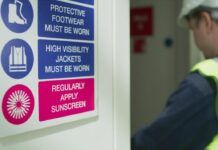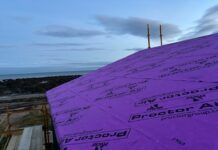Following the announcement of the Independent Expert Advisory Panel (IEAP), which was brought together to advise on the immediate steps to ensure building safety in the wake of the Grenfell Tower fire, the Industry Response Group (IRG), which is made up of members of Government and the construction industry – including representatives from Build UK, the Construction Industry Council and the Construction Products Association – has been brought together “to complement this work.”
As reported on last week’s Roofzine, the IEAP recommended that Government commissioned the Building Research Establishment to undertake further tests to ascertain how different types of ACM panels in combination with various types of insulation behave in a fire. It is understood that once the results are published it may be necessary to act quickly, and at a meeting with Government, the industry acknowledged that it needs to help coordinate the construction industry’s response to the challenges of implementing recommendations from IEAP and Government. The new IRG says it will lead the industry’s response and ensure the sector can meet any new demands.
The IRG, which will be inclusive and cross-industry and led by the sector, will take forward work that will:
- Provide essential advice on possible solutions for use in particular types of buildings to ensure homes, offices and public buildings are safe.
- Provide advice on better ways of building and the latest methods of construction, and ensure access to the necessary technical expertise in industry when required.
- Help mobilise the UK industry if any major programmes of construction work is needed, by acting as a focal point for Government-industry communications.
- Advise Government on the relevant sub-sectors of the construction industry, their expertise and capacity to deliver work at pace.
In a joint statement, the IRG explained: “We understand how concerned people are about the safety of buildings and we would like to reassure the public that the UK construction industry is working with urgency to respond to advice published by the Government. This IRG will demonstrate leadership and, acting as a focal point, provide a collective response to Government and other stakeholders.”
With this in mind, following advice from the IEAP, the Department for Communities and Local Government (DCLG) has written to all building control bodies – including local authorities’ building control departments and private sector Approved Inspectors – in England highlighting key Building Regulation requirements when undertaking cladding work on high-rise buildings over 18m.
At their third meeting, the IEAP felt there was a real need to ensure that any re-cladding work complies with all relevant Building regulations with a particular focus on “structural safety, resistance to moisture penetration and build up, and energy efficiency – as well as ensuring that the fire safety requirements are met.”
DCLG points out that building control bodies are responsible for checking that work complies with Building Regulations’ requirements, and it is the responsibility of those carrying out the work to ensure that the provisions of the regulations are fully met. The letter sets out the Department’s view that if building owners consider they have to re-clad their building this should be considered as building work and therefore subject to Building Regulations’ requirements, plus the letter draws the attention of building control bodies to the following:
- Approaches to demonstrating compliance with fire safety requirements, for example ensuring that cladding and insulation used are of limited combustibility or that a whole wall cladding system BS 8414 test is undertaken. The British Standard 8414 requires that a wall with a complete cladding system – including panels and insulation – fixed to it, is then subject it to a fire that replicates a severe fire in a flat breaking out of a window and whether it then spread up the outside wall.
- Where panels are removed for inspection or testing purposes, the integrity of the whole cladding system needs to be maintained.
- The structural design of any replacement cladding needs to be checked – it should not be assumed that existing fixings and systems are suitable for replacement systems.
- The need to ensure that replacement cladding systems or components protect the building adequately from rain and condensation.
- Guidance on how to meet energy efficiency requirements when re-cladding.
You can read the full letter here: www.gov.uk/government/publications/circular-letter-on-recladding-of-tall-buildings



